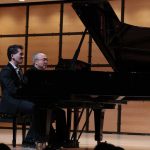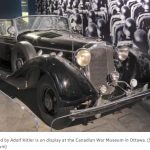照片选自《朝鲜:我们第一次战败》(Korea : The First War We Lost)。作者贝文-亚历山大(Bevin Alexander)朝鲜战争期间为美陆军部派驻前线的战史分遣队队长,后长期为美国陆军及美国政府撰写专题报告,同时兼任某些大报的自由撰稿人。曾长期任教于弗吉尼亚大学。内容简介:本书是第一部由专业的陆军战史学家撰写的著作,全书努力把握历史真实性,全面审视朝鲜战争与中美关系,以及战争带来的后果。
Korean War Photos
These pictures were taken during the Korean War 1950-53. They are also reproduced in Bevin Alexander’s Korea: The First War We Lost.
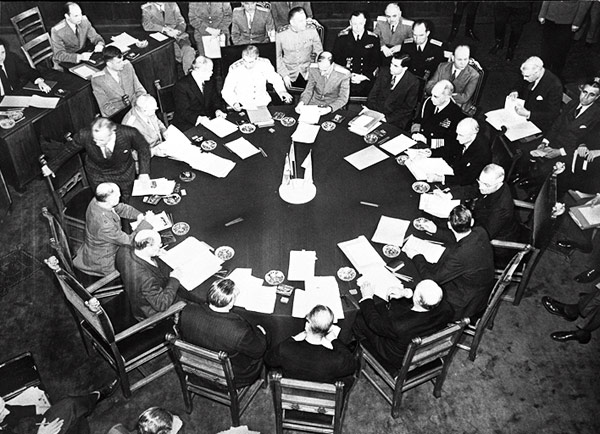
1. The Potsdam Conference of victorious Allies in July, 1945, brought the Soviet Union’s commitment to entering the war against Japan. The result was a Soviet occupation of northern Korea and Korea’s partition along the 38th parallel. (U.S. Signal Corps photo.)
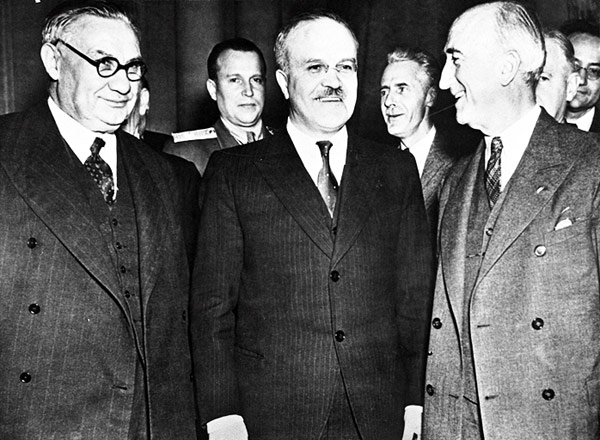
2. At the Moscow conference in December, 1945, Ernest Bevin (left), British foreign secretary; V.M. Molotov (center), Soviet foreign minister, and James F. Byrnes, U.S. secretary of state, agreed on a four-power commission to rule Korea. But the Soviets undermined the commission and established communist rule in the north. (Wide World photo.)
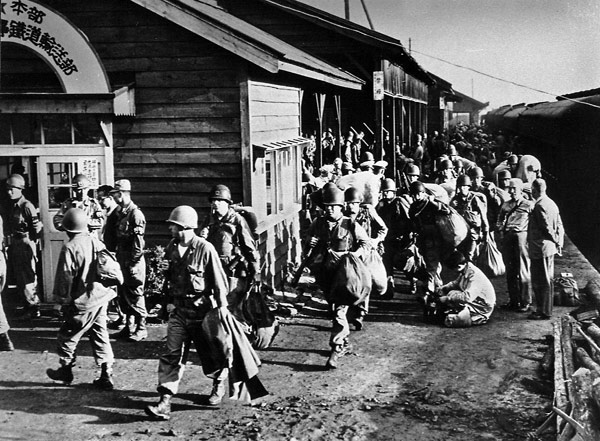
3. Task Force Smith arrives at the Taejon rail station. On July 5, 1950, near Osan, this untried force of about half a battalion, mostly teenagers, stood alone against a North Korean division and a large tank force. (Defense Department photo.)
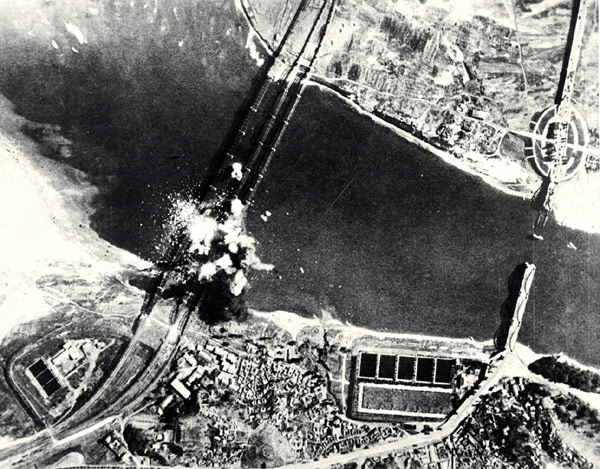
4. U.S. bombs drop on railway bridges at Seoul in early July, 1950. The broken highway bridge at the right was blown without warning by South Korean themselves early on June 28, sending hundreds of fleeing South Korean soldiers and civilians to their deaths. (U.S. Air Force photo.)
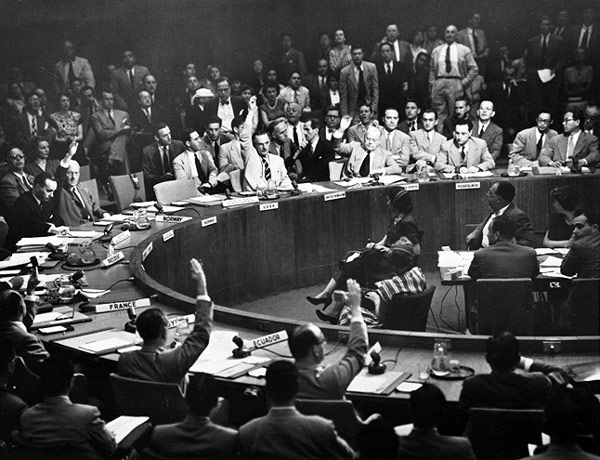
5. The Soviet Union’s seat is conspicuously vacant as the UN Security Council votes on June 27, 1950, to use force to push North Korean troops out of South Korea. ( New York Times photo.)
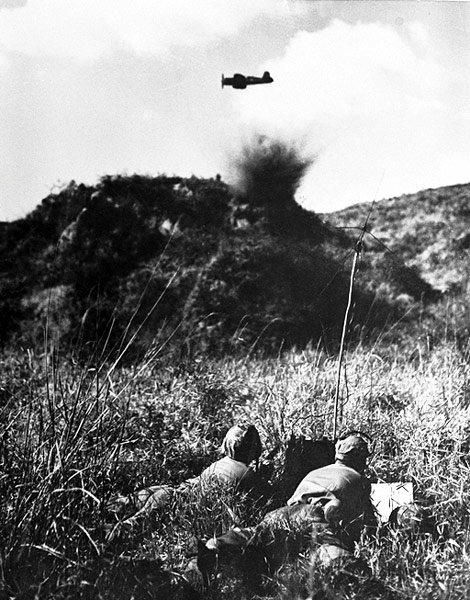
6. A marine air-observer team guides a marine Corsair in for a strike on an enemy-held hill. The “black Corsairs” were highly praised by army and marines alike for their precision strikes on targets and their extremely close support of forward units. (U.S. Marine Corps photo.)
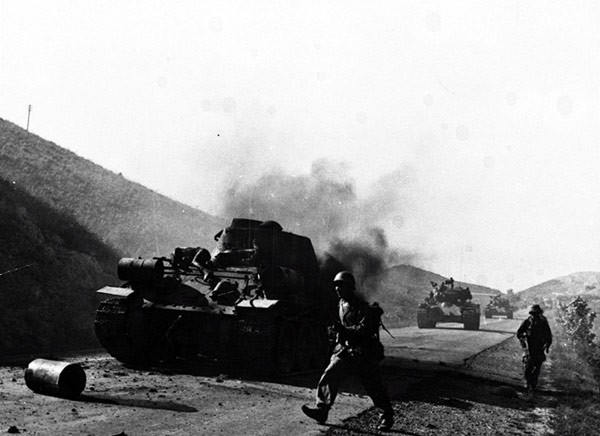
7. Marines move around North Korean T34 tanks knocked out in Pusan Perimeter battle in late summer, 1950. A dead North Korean soldier lies on the tank in the foreground. (U.S. Marine Corps photo.)
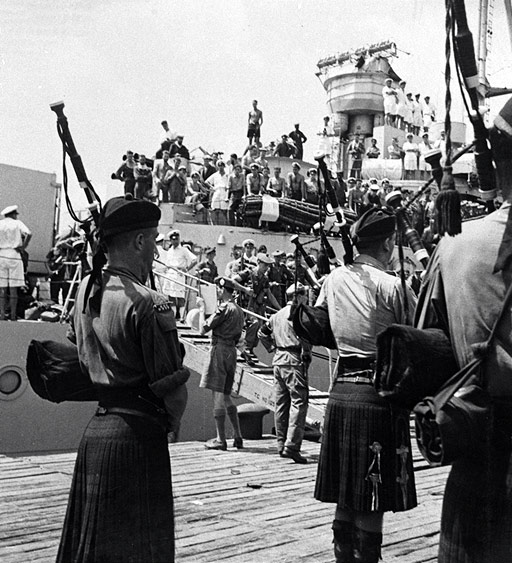
8. Bagpipers of the Argyll and Sutherland Highlanders on August 29, 1950, pipe ashore at Pusan a battalion of their Scottish regiment and a battalion of the English Middlesex Regiment; the first allied ground forces to join the Americans and South Koreans. (U.S. Army photo.)
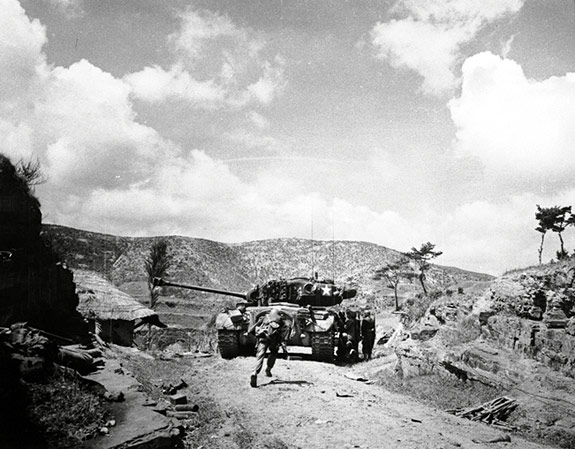
9. Marines seek cover behind an M26 Pershing tank west of Masan during Pusan Perimeter engagement in late summer, 1950. A dead North Korean soldier lies on ledge at left. (U.S. Marine Corps photo.)
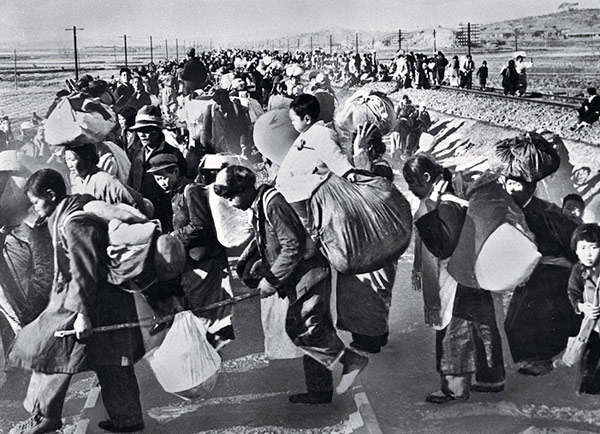
10. Millions of Koreans were uprooted from their homes by bombing, shelling or fear and attempted to flee to safety. Pusan and other cities in the south became giant refugee camps, with people sleeping on the streets. (Defense Department photo.)
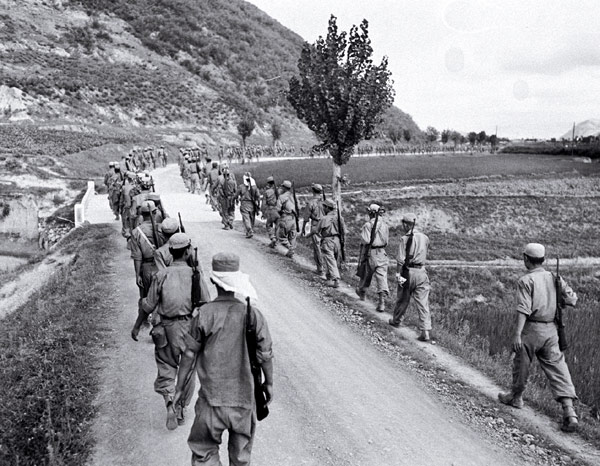
11. Republic of Korea (ROK) soldiers march in typical column formation toward the front in August, 1950, during the Pusan Perimeter battle. This is a standard narrow dirt Korean road raised above rice paddies. (U.S. Army photo.)
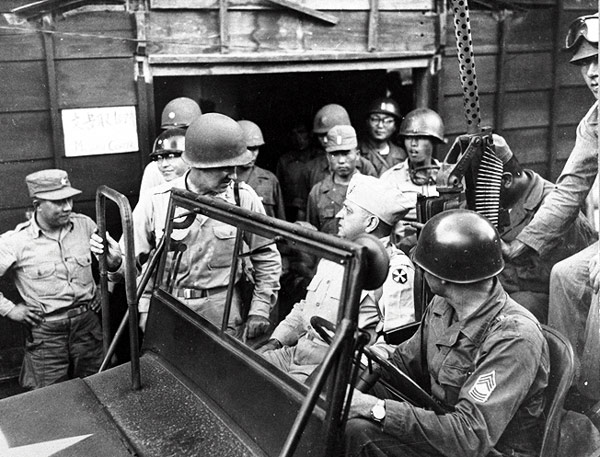
12. Brigadier General F.W. Farrell, Korean Military Advisory Group chief, confers on August 18, 1950, with Lieutenant General Walton H. Walker (seated in jeep), Eighth Army commander, during the height of the Pusan Perimeter battle. (U.S. Army photo.)
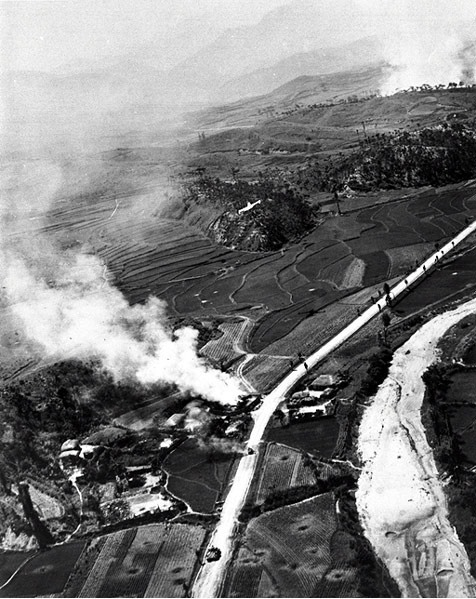
13. During the North Korean offensive in the summer of 1950, an American F-80 jet strafes an enemy T34 tank and jeep in the road and vehicles and troops in the village. (U.S. Air Force photo.)
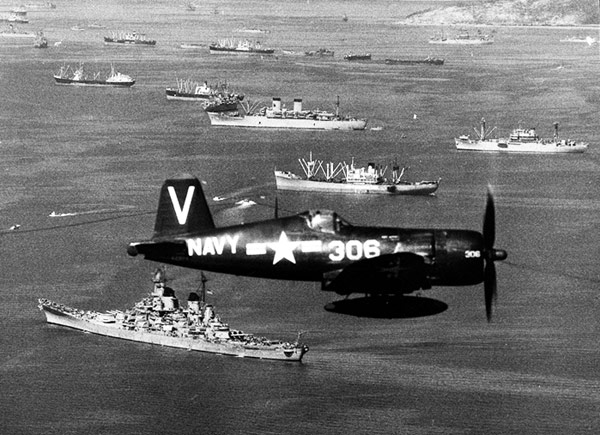
14. A Corsair shepherds part of the armada assembled for the Inchon invasion on September 15, 1950, the world’s last great amphibious landing. (U.S. Navy photo.)
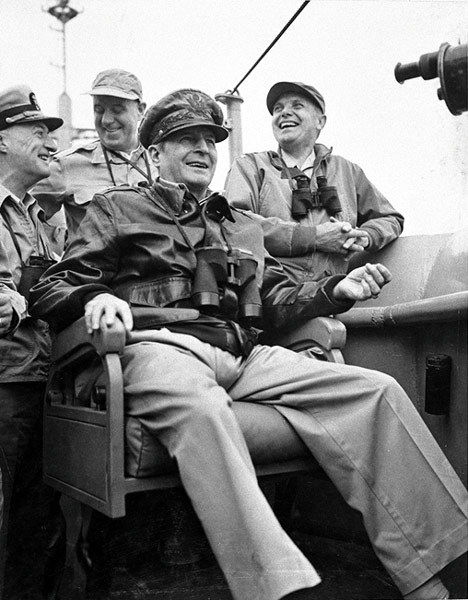
15. General Douglas MacArthur watches bombardment of Inchon from the bridge of the USS Mount McKinley . He is flanked by (from left) Vice Admiral A.D. Struble, Major General E.K. Wright, and Major General Edward M. Almond, X Corps commander. (U.S. Navy photo.)
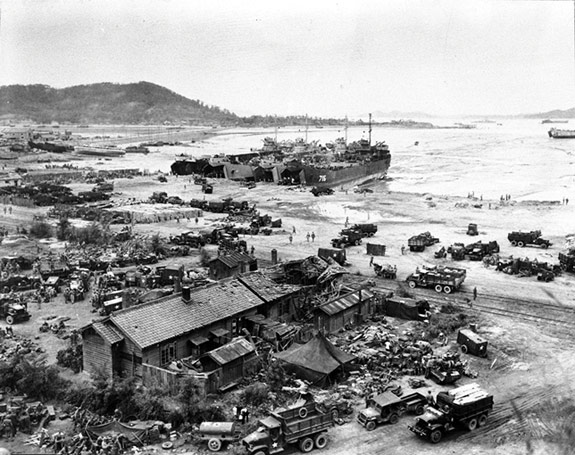
16. Four LSTs unload on the beach at Inchon as marines gather equipment to move rapidly inland on September 15, 1950. Landing ships were stuck in the deep mud flats between one high tide and the next. (U.S. Navy photo.)
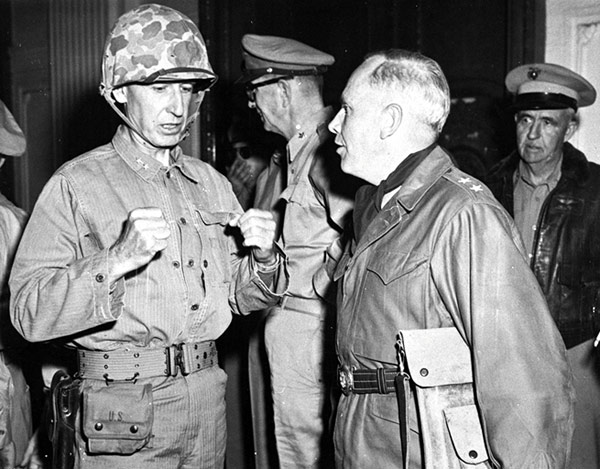
17. The commander of the 1st Marine Division, Major General Oliver P. Smith (left), discussing action immediately after Inchon landing, September 15, 1950, with his boss, army Major General Edward M. Almond, X Corps commander. At right is Major General Field Harris, commander of the marine air wing that provided close support to attacking units. (Defense Department photo, Marine Corps.)
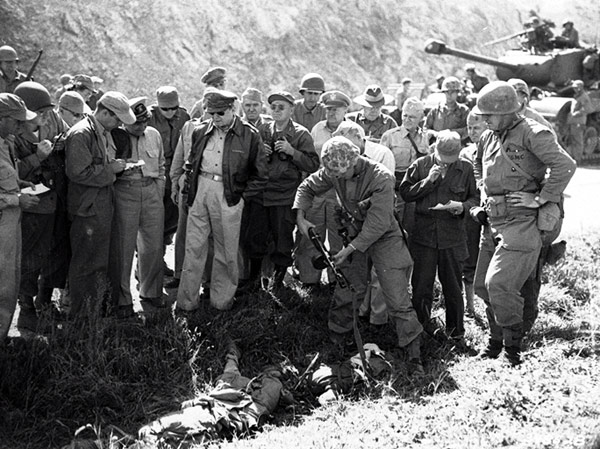
18. General Douglas MacArthur (in leather jacket) and an entourage of press and brass examine bodies of North Korean soldiers at advanced marine positions east of Inchon on September 17, 1950. The marine in camouflage helmet holds a Russian-made submachine gun known to Americans as a burp gun. (U.S. Army photo.)
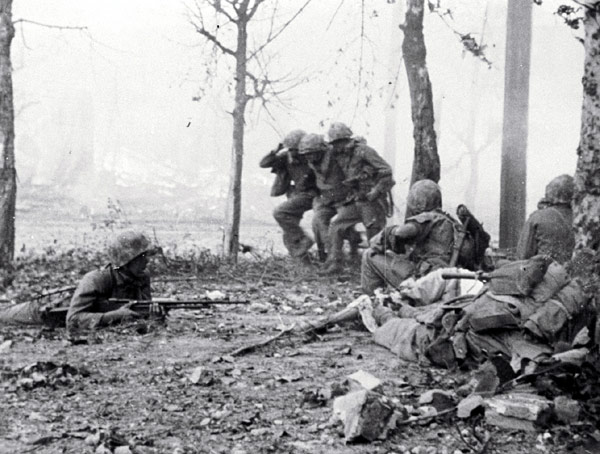
19. Marines carry a wounded comrade while other marines hold positions in the assault on the outskirts of Seoul, September, 1950. (U.S. Marine Corps photo.)
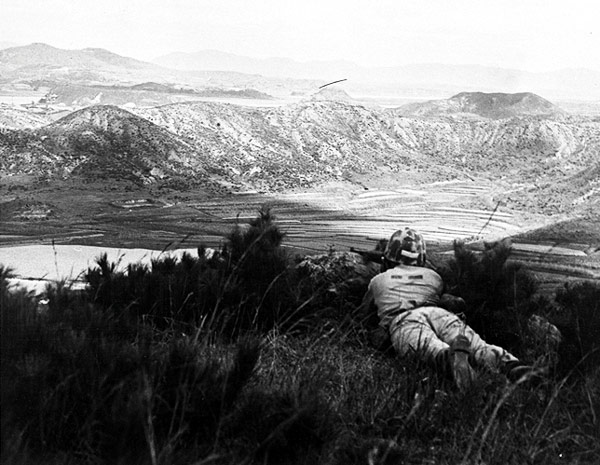
20. A marine infantryman keeps cover as he looks over the Han river valley near Seoul four days after the flanking movement against Inchon. (U.S. Navy photo.)


